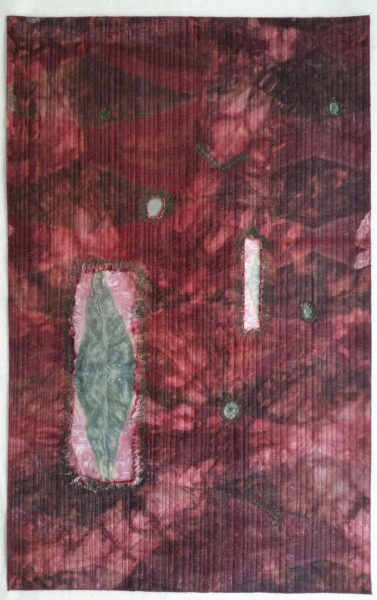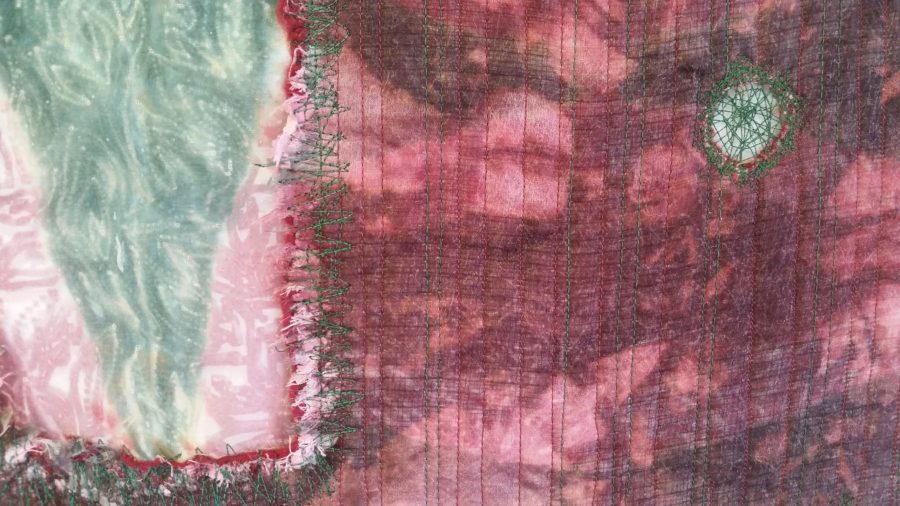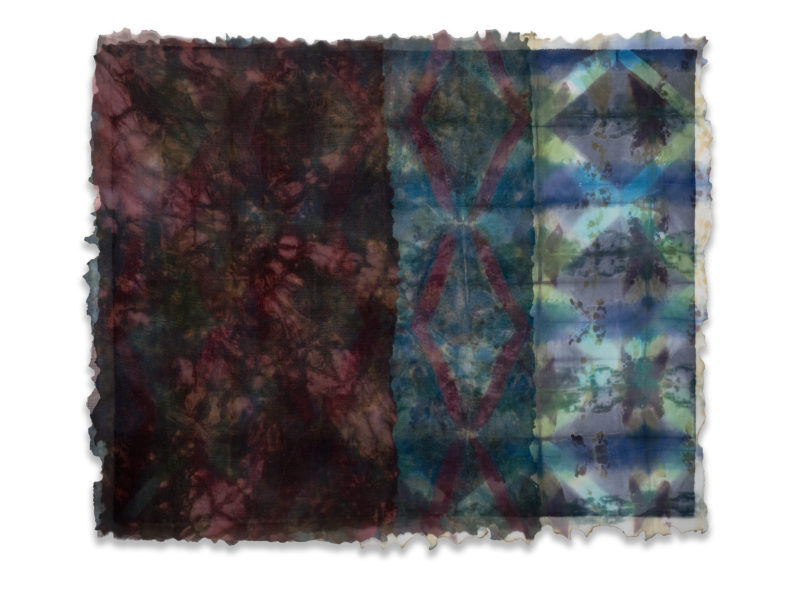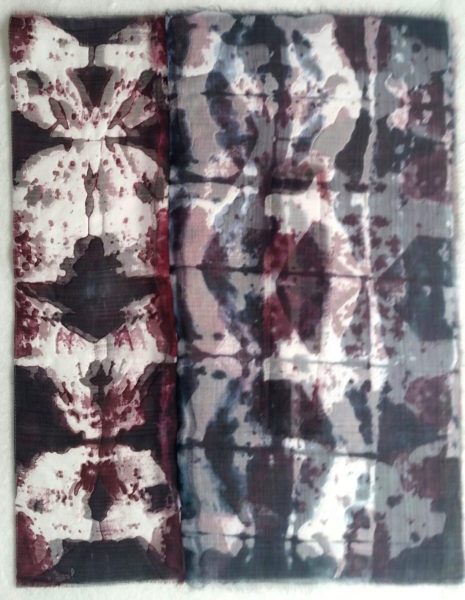My latest art quilt, Yes, I Have Been Mending was inspired by 2 ideas. One is Hazel Hall’s poem, Mending. I recently discovered her poetry through Poets.org’s Poem-a-Day program. It is great to have a poem delivered to my in-box every day. I don’t always read it, but it is there! Hall used stitch imagery in several of her poems, so I was delighted to read her work.
The second idea that inspired me was the visible mending trend. It’s a lot like it sounds, but check out the link or Pinterest for some examples. ‘Yes, I Have Been Mending’ uses several gorgeous layers of hand-dyed silks, which I layered with eco-felt. And then I took an Exacto knife and sand paper to it to create holes. A bit of a travesty, but that is part of the poem! I then patched the red quilt with green thread and some more hand-dyed silks.
My favorite line in Mending is the last. The complete text of the poem is below:
Mending
Here are old things:
Fraying edges,
Ravelling threads;
And here are scraps of new goods,
Needles and thread,
An expectant thimble,
A pair of silver-toothed scissors.
Thimble on a finger,
New thread through an eye;
Needle, do not linger,
Hurry as you ply.
If you ever would be through
Hurry, scurry, fly!
Here are patches,
Felled edges,
Darned threads,
Strengthening old utility,
Pending the coming of the new.
Yes, I have been mending …
But also,
I have been enacting
A little travesty on life.







